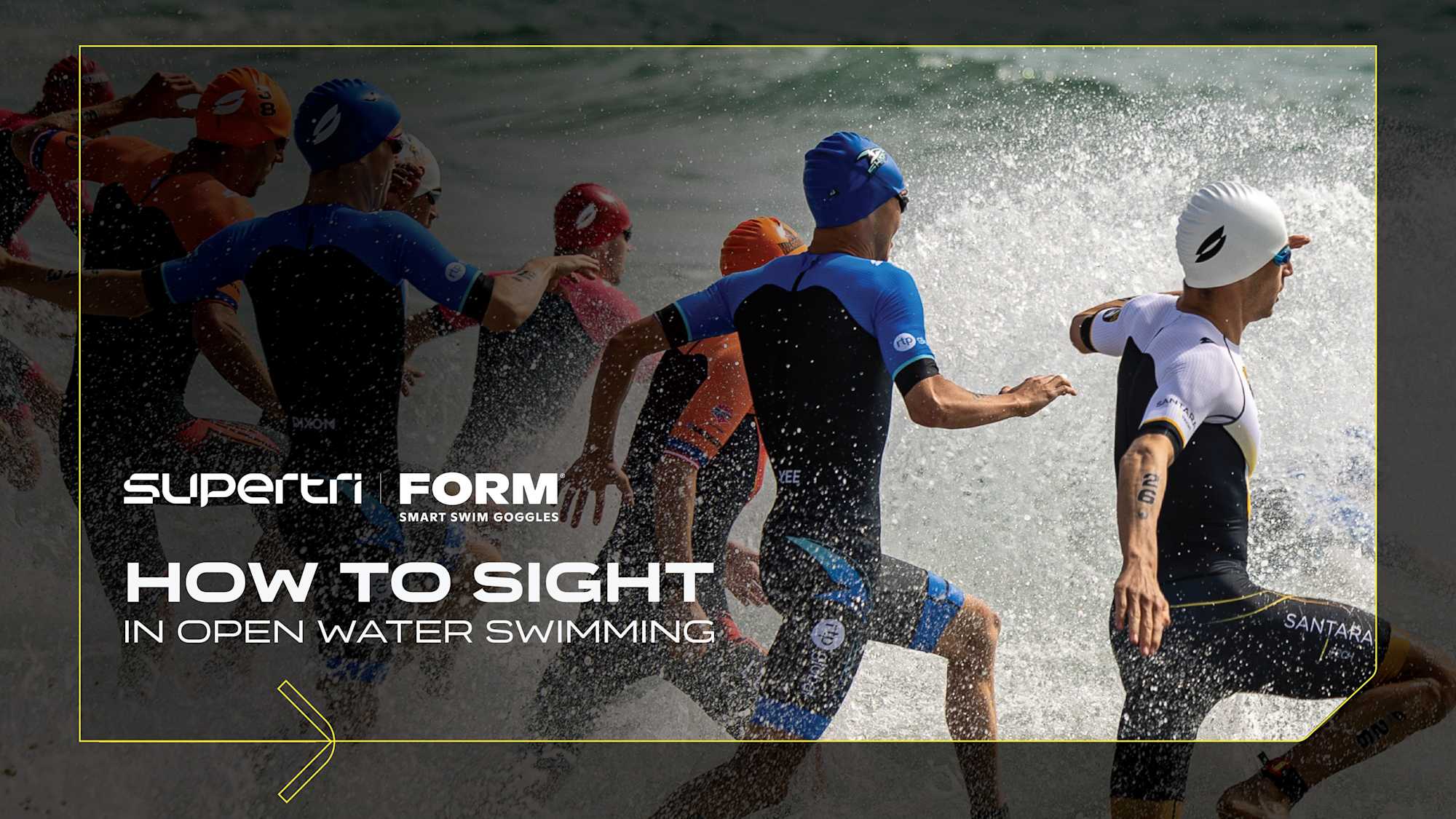How To Sight When Swimming In Open Water

For many triathletes, their first encounter with open water occurs during race preparation or even during the race itself. Open water swimming presents a stark contrast to pool swimming, introducing various new challenges and adjustments. These may include grappling with apprehension about open water, difficulties in gauging distance, which can complicate structured training, as well as encountering minimal or no rest opportunities.
Developing the skill of sighting is crucial for open water swimmers; once you depart from the confines of pool lanes, the ability to sight becomes essential for maintaining a straight course.
Mastering sighting eliminates zigzagging, providing a competitive edge in races. It's equally vital for recreational swimmers, who must watch out for obstacles like fallen trees or boats.
What is sighting?
Sighting involves briefly lifting your gaze from your stroke to assess your surroundings and navigate your swim direction, identifying potential hazards to stay on course. In a race environment, it enables you to take the most direct route, saving wasted swimming time and energy.
Sighting is a vital skill in open water swimming and can be compared to keeping your eyes on the road whilst driving. It enables you to observe your route and surroundings by lifting your gaze without impeding your pace.
How to sight in open water
Generally, there are two approaches to sighting: either raising your entire head out of the water when looking forward or simply lifting your eyes above the water's surface (akin to a crocodile). Both methods are acceptable in swimming, so it's worth experimenting to discover which feels most comfortable and natural for you.
WHOLE HEAD LIFT: Some prefer to lift their entire head out of the water, finding this broader movement easier to integrate into their swim. This approach affords swimmers a longer duration to survey their surroundings. However, it's essential to avoid lifting the head excessively, as it can lead to wasted time and energy.
CROC EYES: Some swimmers opt for the "crocodile eyes" technique, where only their eyes emerge above the waterline, conserving energy and maintaining stroke rhythm more effectively.
Tools to help you sight
Open water nerves and confidence have long been significant concerns for swimmers, whether competing or training. That's why FORM has introduced SwimStraight™ into their new smart goggles.
SwimStraight™ is engineered to address the topmost concern among swimmers: maintaining a straight course in open water. This innovative feature incorporates a first-of-its-kind digital compass, providing swimmers with in-goggle directional guidance. By reducing course deviations and improving overall swim efficiency, SwimStraight™ enhances swimmers' confidence and performance in open water environments.
As well as SwimStraight™ the goggles also provide you with lots more useful data. You are able to see your heart and stroke rate whilst you're swimming to really settle those nerves in open water and help you settle into a comfortable and consistent rhythm.
The experience of using SwimStraight™is designed to be seamless and intuitive. Swimmers undergo a short calibration process before swimming to ensure the compass is adjusted to local conditions.
Heart Rate Monitoring
Keeping calm and conserving energy is crucial to starting your triathlon off well. FORM Smart Swim 2 now has an integrated heart rate sensor, allowing you to track your exertion levels in real-time. By integrating heart rate data with other metrics like pace and distance, these goggles provide valuable insights into your physiological response to swimming, enabling you to adjust your effort level accordingly and optimize performance.
By prioritizing energy conservation, technique refinement, plus utilizing the SwimStraight™ features keeping you on course, you can swim smarter, not just harder to achieve your goals with confidence and efficiency in open water.
Top Tips for sighting
Select a distinctive landmark in the environment to sight against.
Employ your pulling motion to raise your head above the water's surface.
Ensure regular sightings to maintain your direction, but remain flexible in adapting to changing conditions; don't feel constrained to a fixed sighting frequency.
Be willing to adjust your chosen landmark as your surroundings evolve.





